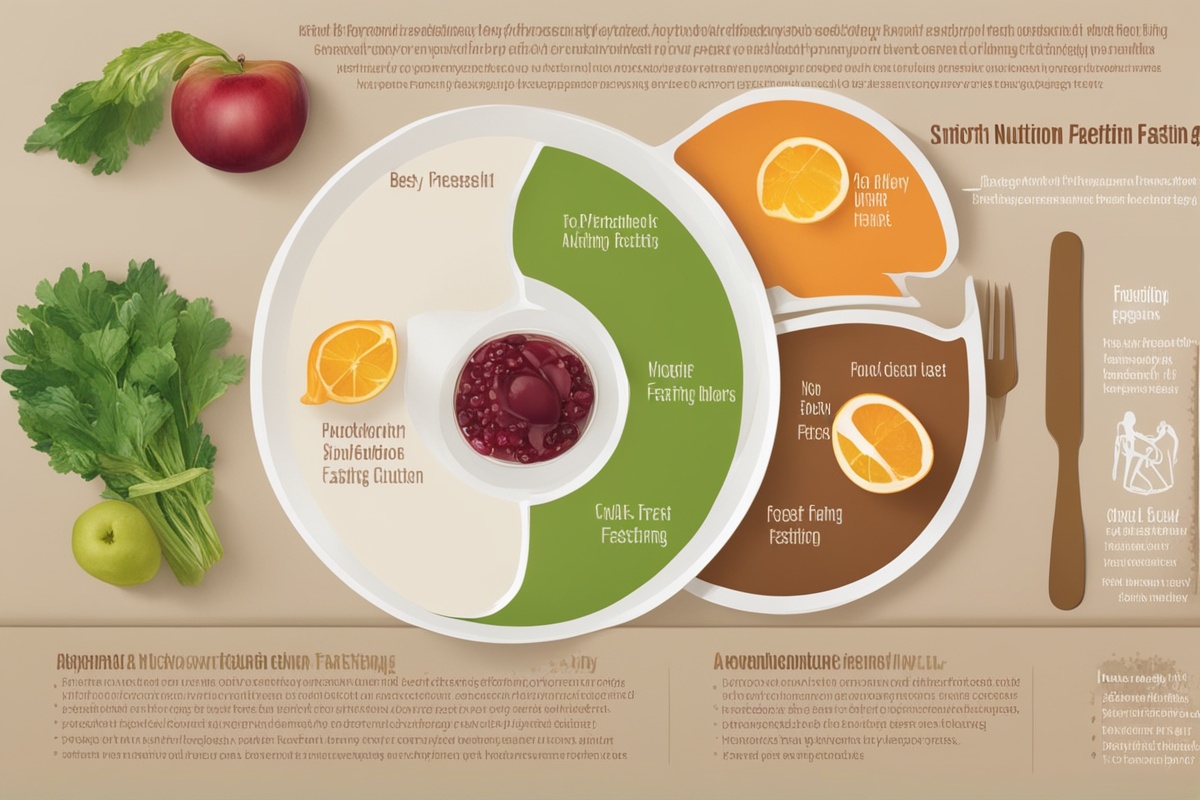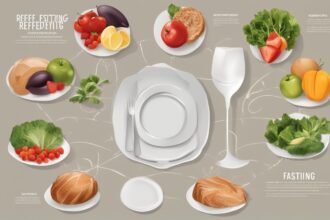Fasting, whether for health, spiritual, or weight loss reasons, has gained significant popularity in recent years. However, what happens after the fast is just as crucial as the fast itself. Reintroducing food to your body requires careful planning to avoid digestive distress, nutrient imbalances, or other health complications. This is where the concept of Balanced Meals After Fasting comes into play. Crafting well-rounded meals ensures that your body receives the necessary nutrients to recover and thrive post-fast. In this comprehensive guide, we’ll explore effective refeeding strategies to help you transition smoothly back to regular eating.
Why Balanced Meals Matter After Fasting
After a period of fasting, your digestive system slows down, and your body adapts to a state of energy conservation. Suddenly overloading your system with heavy or unbalanced meals can lead to bloating, stomach pain, or even more severe conditions like refeeding syndrome—a potentially fatal condition caused by rapid shifts in electrolytes and fluids. Balanced meals after fasting provide a gentle reintroduction of nutrients, helping to stabilize blood sugar levels, restore energy, and support overall recovery. These meals should include a mix of macronutrients (carbohydrates, proteins, and fats) and micronutrients (vitamins and minerals) to ensure your body gets what it needs without overwhelming it.
Key Components of Balanced Meals After Fasting
When planning your first meals after a fast, it’s essential to focus on easily digestible foods that provide a steady release of energy. Here are the key components to include:
- Carbohydrates: Opt for complex carbs like oatmeal, sweet potatoes, or brown rice. These foods provide sustained energy without spiking blood sugar levels.
- Proteins: Include lean proteins such as eggs, tofu, or chicken broth to support muscle repair and recovery. Start with small portions to avoid straining your digestive system.
- Healthy Fats: Incorporate small amounts of healthy fats from sources like avocado, nuts, or olive oil to aid nutrient absorption and provide energy.
- Hydration: Rehydration is critical. Begin with water, herbal teas, or electrolyte solutions before moving to solid foods.
- Micronutrients: Add fruits and vegetables for essential vitamins and minerals. Steamed or lightly cooked options are often easier to digest initially.
By focusing on these components, you can create balanced meals after fasting that nourish your body without causing distress.
Timing and Portion Control for Post-Fast Meals
Timing and portion size are critical when reintroducing food after a fast. Eating too much too soon can overwhelm your digestive system, while eating too little may leave you feeling weak. Start with small, frequent meals—think three to five small portions throughout the day rather than three large meals. For example, after a 24-hour fast, begin with a light broth or smoothie in the first few hours, then gradually introduce solid foods like a small bowl of oatmeal or a piece of fruit. For longer fasts (72 hours or more), the refeeding process may need to span several days, starting with liquids and very small portions of easily digestible foods. To learn more about portion control, check out our guide on Portion Sizes for Healthy Eating.
Foods to Avoid When Breaking a Fast
While balanced meals after fasting are essential, knowing what to avoid is just as important. Certain foods can be too harsh on a sensitive post-fast digestive system. Steer clear of:
- Processed Foods: High-sugar or high-fat processed snacks can cause rapid blood sugar spikes and digestive discomfort.
- Heavy Meals: Avoid large portions of red meat, fried foods, or creamy dishes that are hard to digest.
- Alcohol and Caffeine: These can dehydrate you and irritate your stomach lining, so wait a few days before reintroducing them.
- High-Fiber Foods: While fiber is essential, raw vegetables or whole grains in large amounts may cause bloating initially. Start with cooked options instead.
By avoiding these foods, you can ensure a smoother transition and prevent unnecessary strain on your body. For more tips on foods to avoid, read our post on Common Dietary Mistakes After Fasting.
Sample Meal Plan for Balanced Meals After Fasting
Creating a structured meal plan can help you stay on track and ensure you’re getting the right nutrients. Below is a sample one-day plan for breaking a 24- to 48-hour fast. Adjust portion sizes and food choices based on your specific needs and the duration of your fast.
- Meal 1 (Upon Breaking Fast): A small glass of warm vegetable broth or diluted fruit juice to rehydrate and provide electrolytes.
- Meal 2 (2 Hours Later): Half a banana and a small handful of almonds for a mix of carbs and healthy fats.
- Meal 3 (Lunch): A small bowl of oatmeal with a drizzle of honey and a few steamed vegetables for balanced nutrition.
- Meal 4 (Afternoon Snack): A boiled egg or a small piece of grilled chicken with a slice of avocado for protein and fat.
- Meal 5 (Dinner): A small portion of brown rice with steamed fish and a side of cooked carrots for a well-rounded meal.
This plan prioritizes small, nutrient-dense meals to ease your body back into regular eating. For additional meal ideas, explore our article on Post-Fast Recovery Recipes.
Listening to Your Body During Refeeding
Every individual’s body reacts differently to fasting and refeeding. Pay close attention to how you feel after each meal. Signs of discomfort, such as bloating, nausea, or fatigue, may indicate that you’re eating too much or consuming foods that are too heavy for your current state. On the other hand, feelings of sustained energy and improved mood are good indicators that your balanced meals after fasting are working. Keep a food journal to track what you eat and how you feel, and adjust accordingly. If you’re unsure about your refeeding strategy, consider consulting a nutritionist or healthcare provider. For more personalized advice, check out our resource on Customizing Your Diet Plan.
Disclaimer: The information provided in this article is for educational purposes only and is not intended as medical advice. Fasting and refeeding can carry risks, especially for individuals with pre-existing health conditions or those who have fasted for extended periods. Always consult with a healthcare professional or registered dietitian before starting or ending a fast to ensure your safety and well-being. We are not responsible for any adverse effects resulting from the application of the strategies discussed in this post.
References
- Mehanna, H. M., Moledina, J., & Travis, J. (2008). Refeeding syndrome: what it is, and how to prevent and treat it. BMJ.
- Mayo Clinic. (n.d.). Fasting diet: Can it improve my heart health?
- Harvard Health Publishing. (2018). Intermittent fasting: Surprising update.
- WebMD. (n.d.). Diet myths and facts.
- Academy of Nutrition and Dietetics. (n.d.). Fasting and eating for health.
This content is for informational purposes only and not a substitute for professional advice.






